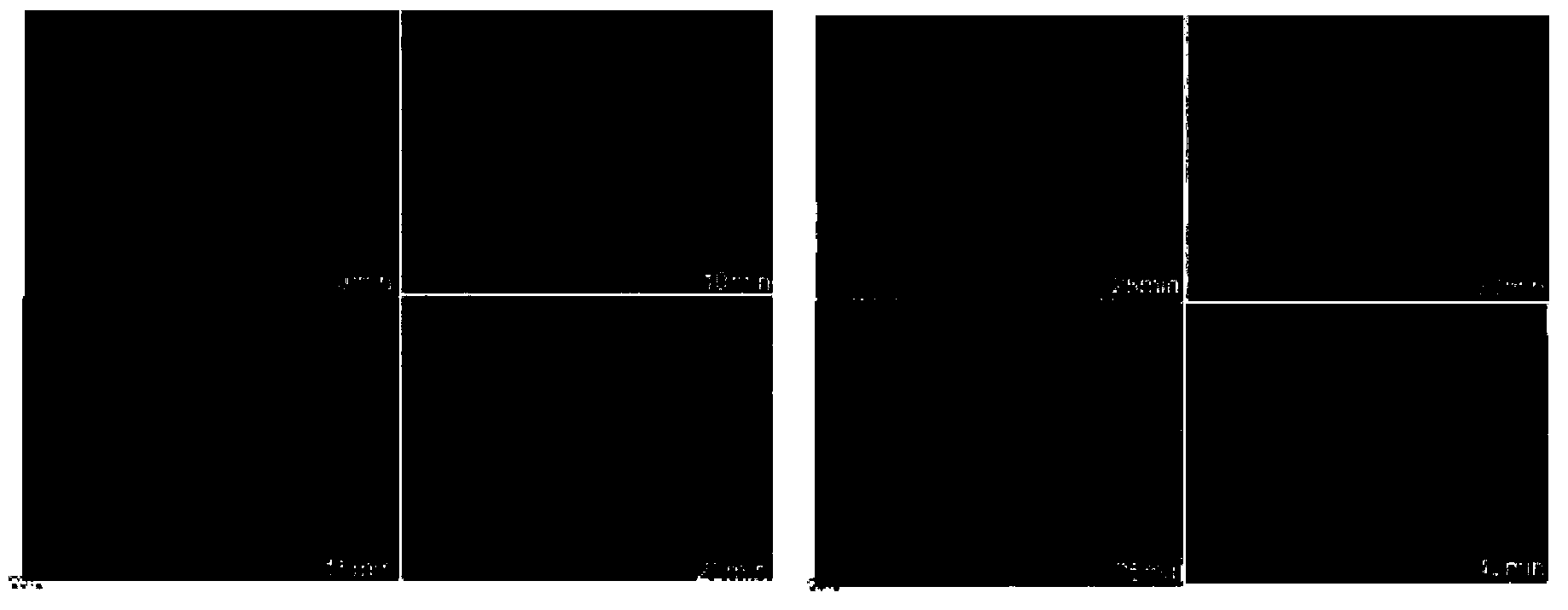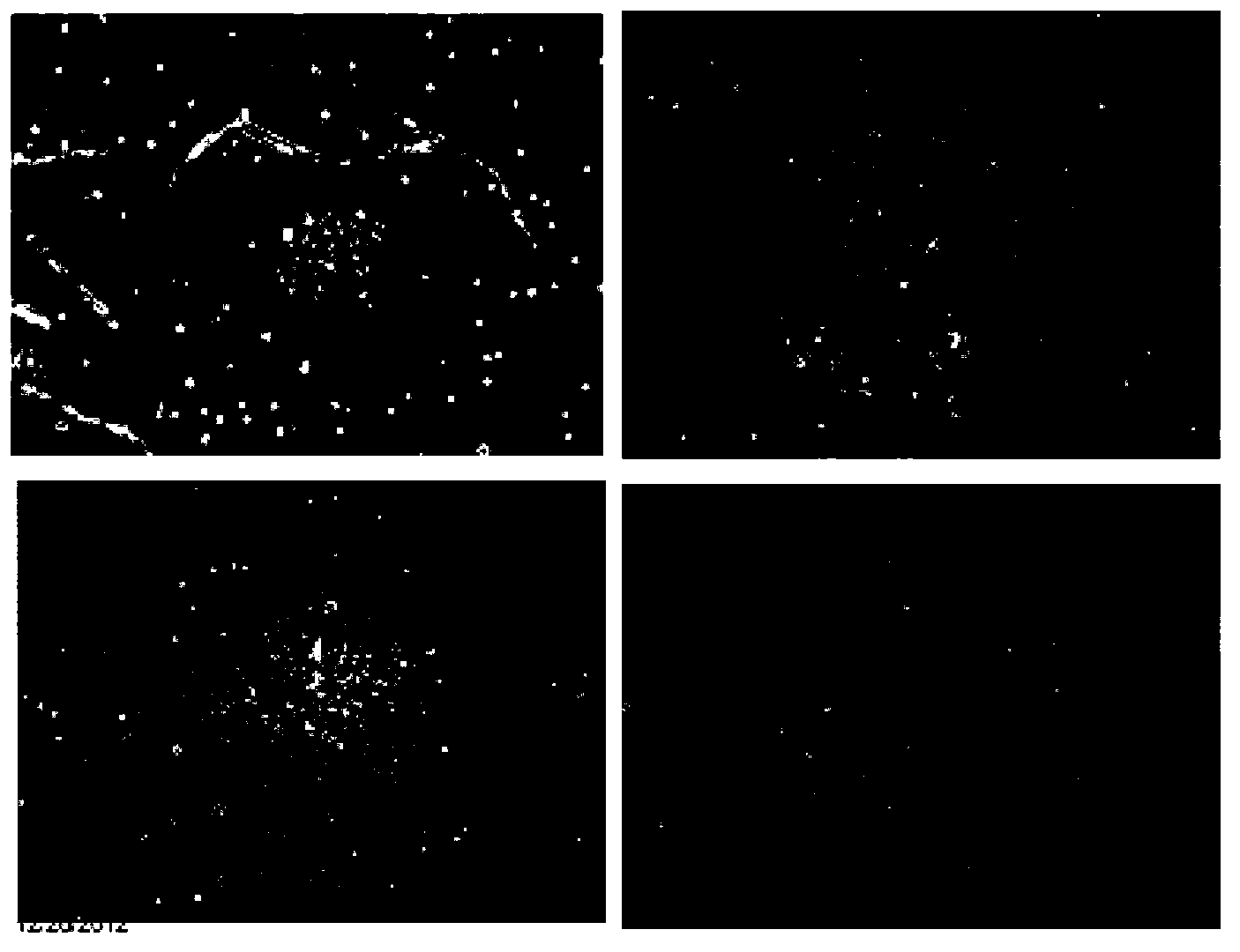Culture apparatus used for temperature sensitive cells, preparation method thereof and cell culturing method
A temperature-sensitive, cell culture technology, applied in tissue cell/virus culture devices, biochemical equipment and methods, animal cells, etc., can solve the problems of cell surface proteins, ion channels, cell signal damage, etc., to reduce death , the effect of reducing damage, improving quality and activity
- Summary
- Abstract
- Description
- Claims
- Application Information
AI Technical Summary
Problems solved by technology
Method used
Image
Examples
Embodiment 1
[0032] Example 1 Preparation of temperature-sensitive polystyrene culture sheet by spin coating method and cultivation of human umbilical cord mesenchymal stem cells
[0033] (1) Synthesis of polystyrene (PS): In a 25ml round-bottom single-necked flask, add 10ml of dry toluene solvent, add 7.5g of styrene and 1.5g of diisopropyl xanthate (DIP) into the flask Stir evenly, add 0.5g AIBN at room temperature, stir until the AIBN is completely dissolved, seal with a rubber stopper, and cycle three times with nitrogen gas-freezing-pumping. React at 75°C for 6 hours, remove toluene by rotary evaporation, add THF to dissolve, and precipitate in petroleum ether to obtain 7.5 g of polystyrene (PS).
[0034] (2) Synthesis of PS-PNIPAAm: Add 1.0 g PS, 1.2 g isopropylacrylamide monomer, and 10 mg AIBN to 6 ml of dry 1.4 dioxane, stir and dissolve at room temperature. Nitrogen-freezing-pumping cycles three times, react at 80°C for 10 h, remove 1.4 dioxane by rotary evaporation, add THF to ...
Embodiment 2
[0039] Example two dental pulp mesenchymal stem cells were cultured in the graft
[0040] (1) In a 10ml round-bottom single-necked flask, add 5ml of dry toluene solvent, add 12g of styrene and 2.4g of diisopropyl xanthate disulfide (DIP) into the flask and stir evenly, add 0.8g of AIBN at room temperature, and stir Until the AIBN is completely dissolved, seal it with a rubber stopper, and cycle three times with nitrogen gas-freezing-pumping. React at 75°C for 5 hours, remove toluene by rotary evaporation, add THF to dissolve, and precipitate in petroleum ether to obtain polystyrene (PS).
[0041] (2) Synthesis of PS-PNIPAAm: Add 3.0 g PS, 6.0 g isopropylacrylamide monomer, and 150 mg AIBN to 10 ml of dry 1.4 dioxane, stir and dissolve at room temperature. Nitrogen-freezing-pumping cycle five times, react at 90°C for 15 hours, remove 1.4 dioxane by rotary evaporation, add THF to dissolve, and precipitate in ether to obtain PS-PNIPAAm block polymer.
[0042] (3) Dissolving the...
Embodiment 3
[0045] Example 3 Growth and detachment of human amniotic mesenchymal stem cells on the surface of the graft
[0046] (1) Synthesis of PS-PNIPAAm block copolymer: Add 5.0g PS, 10g isopropylacrylamide monomer, and 80mg AIBN to 50ml dry 1.4 dioxane, stir and dissolve at room temperature. Nitrogen-freezing-pumping cycles three times, react at 100°C for 12 hours, remove 1.4 dioxane by rotary evaporation, add THF to dissolve, and precipitate in ether to obtain PS-PNIPAAm block polymer.
[0047] (2) Dissolving the prepared PS-PNIPAAm block polymer in tetrahydrofuran. Polystyrene material cut into 5cm 2 Place the polystyrene sheet on the vacuum suction cup of the coating machine, drop the block polymer solution onto the polystyrene sheet with a syringe, and rotate at 8000rpm for 40s to ensure uniform suspension coating. After obtaining the grafted pieces, put them into an oven at 100°C and dry them for 3 hours for later use.
[0048] (3) Sterilization treatment of temperature-sensi...
PUM
 Login to View More
Login to View More Abstract
Description
Claims
Application Information
 Login to View More
Login to View More - R&D
- Intellectual Property
- Life Sciences
- Materials
- Tech Scout
- Unparalleled Data Quality
- Higher Quality Content
- 60% Fewer Hallucinations
Browse by: Latest US Patents, China's latest patents, Technical Efficacy Thesaurus, Application Domain, Technology Topic, Popular Technical Reports.
© 2025 PatSnap. All rights reserved.Legal|Privacy policy|Modern Slavery Act Transparency Statement|Sitemap|About US| Contact US: help@patsnap.com



